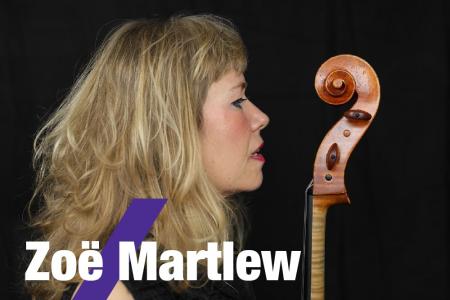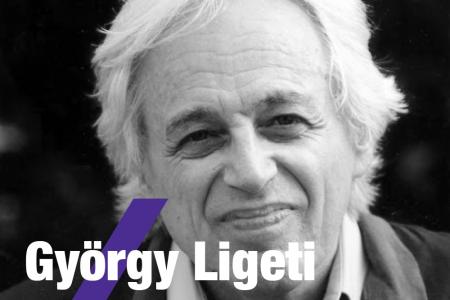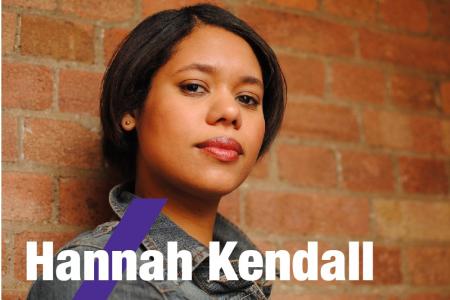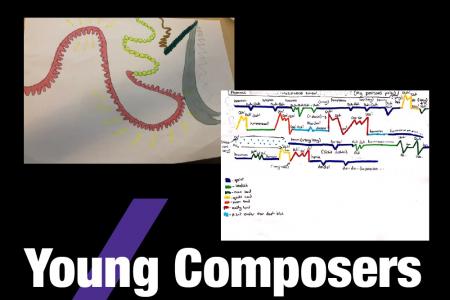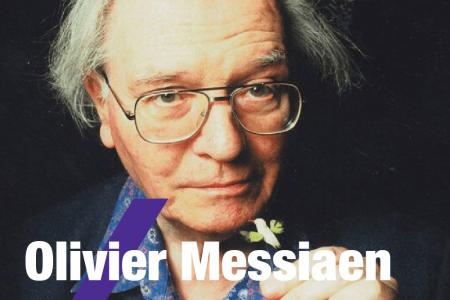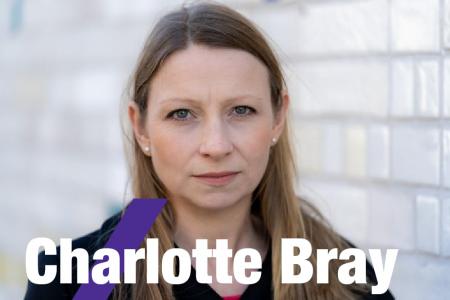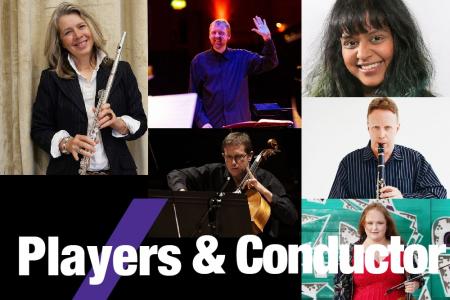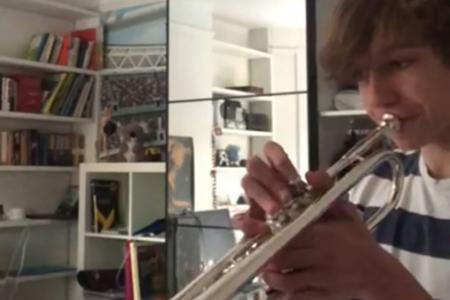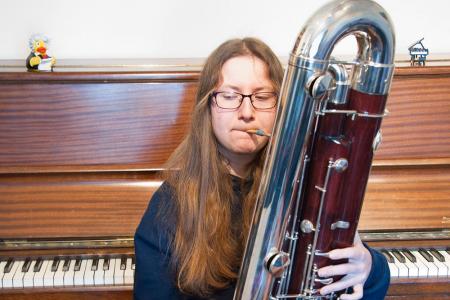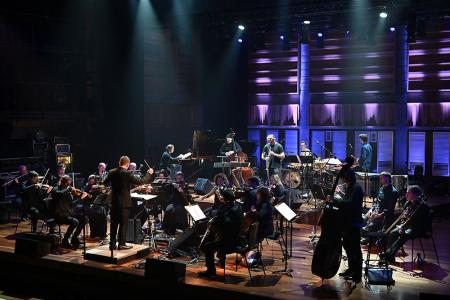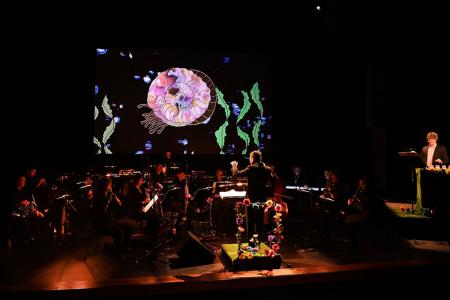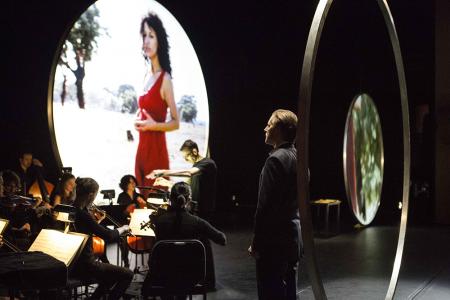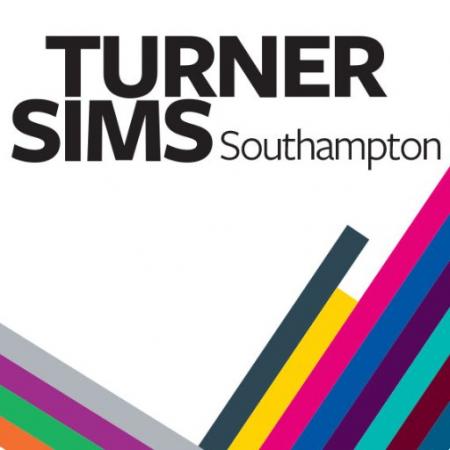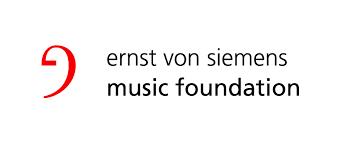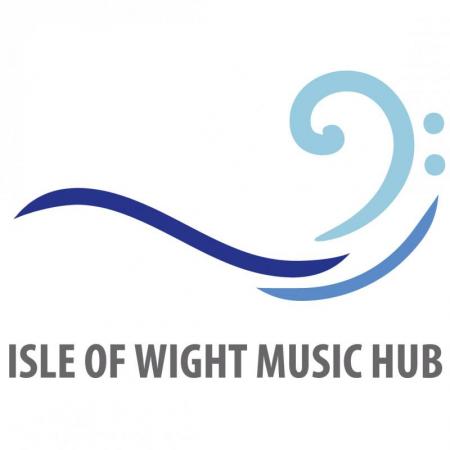Welcome to our Sound Out Schools Concert!
This special live streamed concert will bring together young people from across the UK to explore how to compose and create music, hear our musicians perform pieces by living composers and be the first audience to hear new works by young people who have taken part in our Composition Challenges.
Everyone is also invited to take part in a special distanced performance of Alex Ho’s Say Hi during the live stream and find out more about our composers and their music below. And if you haven’t already taken up one of our Composition Challenges, please do have a go –anyone can become a composer!
Click here to watch the livestream from London
Click here to watch the livestream from Southampton

Zoë Martlew, b.1968
Slap On
British composer and cellist Zoë Martlew is a regular performer with the London Sinfonietta. She has also written pieces of music for us and hosts our podcast series, ‘The Music That Made Me’ where she interviews other composers about their favourite music.
Slap On is inspired by funk music and the strong rhythms of this style of music, the piece can be performed by group of musicians and was originally written for the organisation CoMA (Contemporary Music for All) who support amateur musicians to perform new music. As well as playing their instruments the performers in this piece are instructed to (gently!) slap their bodies with specific rhythms, as well as using their voices.
Activity
Have a go creating your own piece of music using body percussion. You could try something simple like this – choose and copy one of the six different parts and get your friends to perform the other parts to build up the full texture of the music.
Or you could try your hand at something a little more complicated like Steve Reich’s Clapping Music – a piece that uses a single clapping pattern that repeats and shifts in cycles Steve Reich’s Clapping Music - YouTube.
You could also create your own rhythmic patterns and layer them together to compose a brand new body percussion piece. Think about the different sounds you can create using different parts of your bodies – legs, knees, arms, heads, cheeks, hands, fingers. Play with different sound effects and dynamics as you compose.

Gyorgy Ligeti, 1923-2006
i. Sostenuto – Misurato – Prestissimo from Musica Ricercata
György Ligeti was born in Transylvania, Romania. The strict Communist regime in the country at that time meant that he was often restricted in what music he was allowed to compose. He later moved to Vienna in Austria where he was free to write the more experimental music he was most interested in. One of his most famous pieces of music featured in the film 2001: A Space Odyssey. Have a listen to it here.
The piece you will hear today is the first of eleven short pieces for piano titled Musica Ricercata. The title translates as either ‘researched music’ or ‘sought music’ and marks the beginning of Ligeti’s experimental, more radical composition style. This first movement is unusual in that it features just one note* - an A. Despite only using one note, Ligeti experimented with all the different ways to create musical interest by varying the dynamics and rhythms and jumping up and down the piano keyboard from high to low As throughout the piece.
*A different note makes one single appearance in the piece if you listen carefully!
Activity
Try composing a piece with one note or one sound. If you have a pitched instrument (an instrument that can play different notes), choose one note – Ligeti chose the note A.
How many of your chosen note are there on your instrument? If there is more than one, make sure you use them all during the piece. Invent two different rhythms to play on your note. If you have an unpitched instrument (like a drum), you can follow all these steps as well.
Call the first rhythm, rhythm A, and the second, Rhythm B. Decide what dynamic (loud or soft) you are going to play each rhythm - for example, Rhythm A loud (forte), Rhythm B soft (piano). Decide a structure for your piece by choosing when to play Rhythm A and when to play Rhythm B - for example, A,A,B,B,A. Now try performing your piece.
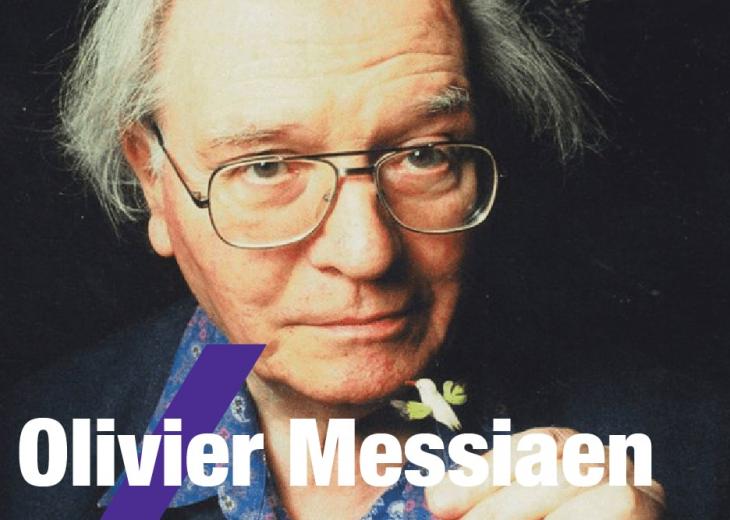
Olivier Messiaen, 1908-1992
iv. Intermede from Quatuor pour la fin du temps (Quartet for the end of time)
Olivier Messiaen was born in France and studied music at the Paris Conservatoire from the age of 11. He was drafted into the French army during World War II, where he became a prisoner of war and was taken to a camp in Görlitz, Germany in May 1940. He wrote his Quatuor pour la fin du temps ("Quartet for the End of Time") whilst he was there and it was first performed in January 1941 to an audience of prisoners and prison guards, with Messiaen himself playing an old and not very well looked-after piano in freezing conditions.
Activity
Messiaen used to love using bird song in his music and he would often listen to birds singing in the countryside and write down their song in musical notation. You can hear all sorts of bird song here. Find a favourite one and see if you can imitate it on a musical instrument or with your voice or even by whistling. Listen to rhythms and the silences, the rise and fall of the pitch and whether the song is loud or soft.
You could try drawing the song – using lines, swirls, dots or any other marking – to create a musical score. Messiaen alternates between bird song and a rustic folk dance in his piece. You could create some dancing rhythms with percussion instruments or using body percussion and play the bird song over the top or on its own to create a class piece.
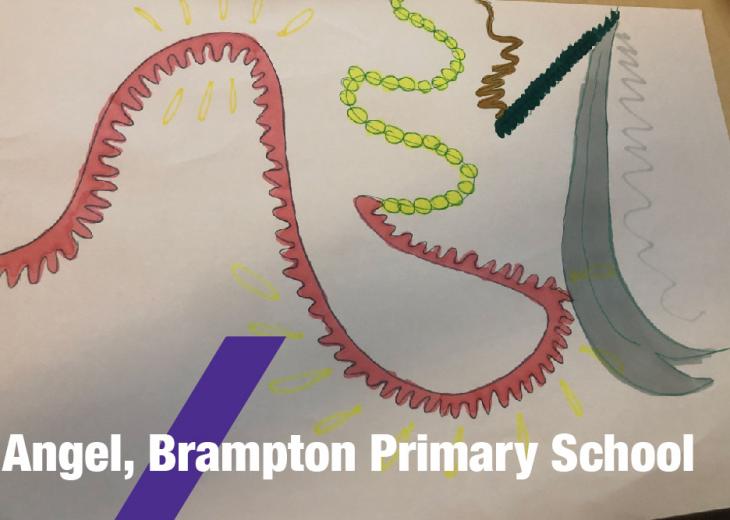
Angel Adomako, Year 6, Brampton Primary School, Newham
Neon Stripes (World Premiere)
Our clarinettist Mark, said this about the piece
'I’ve chosen to play this piece in our concert because it’s a beautiful design which makes many musical suggestions. It suggests pitch, colours of sound, loudness, flow, and differences between short and long, all without using any conventional musical notation at all and while remaining a beautiful picture. Brilliant!'
Activity
Have a go creating your own Postcard Piece with our Composition Challenge!
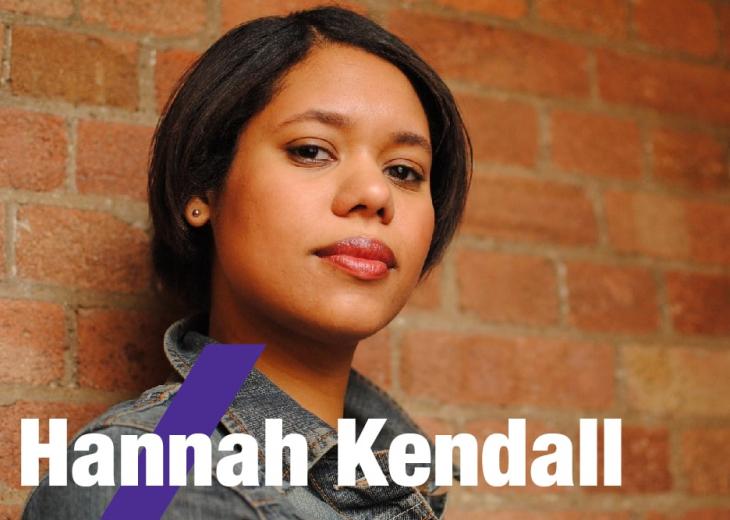
Hannah Kendall, b.1984
A Winged Spirit
Hannah Kendall was born in London but now lives in New York where she a Doctoral Fellow at Columbia University. Hannah likes to use her music to bridge the gap between different musical cultures and is often inspired by other artforms - poems, stories and visual art - composing musical responses to them. She is currently writing an Afrofuturist opera for experimental vocalist and movement artist Elaine Mitchener and will also have a new solo piece for violin premiered by the London Sinfonietta later this year.
A Winged Spirit was inspired by Joseph Cornell’s untitled artwork for his friend, internationally acclaimed Russian ballerina Tamara Toumanova. It is a fantastical collage where Tamara is depicted as a fairy-like figure in a weightless scene that fuses deep sea and deep space; incorporating shells, marine life and cosmological features, blended together with a white, speckled haze. The piece was written to be performed by people studying the violin, so do have a go if you’re a violinist!
Activity
Joseph Cornell created art work with collages and box art – where he would place items in a glass-fronted box. You can search for these – ‘Joseph Cornell collage’. Choose a favourite image. Look at, and list, some of the different objects you can see. You can add some expressive words to capture a sense of their colour, texture, size etc.
From your list, let each object inspire a sound or musical idea. You can use musical instruments or use found objects, similar to those in the picture. Give your musical sound more detail by thinking about how loud or soft to make each one. If the sound is short and does not sustain, can you make it longer by repeating it a few times? Can you create a mixture of high and low sounds? Once you have a rich mixture of sounds and musical ideas, think about a structure – which sound will start, which one will follow, do two or more happen simultaneously? Which one will end the piece?
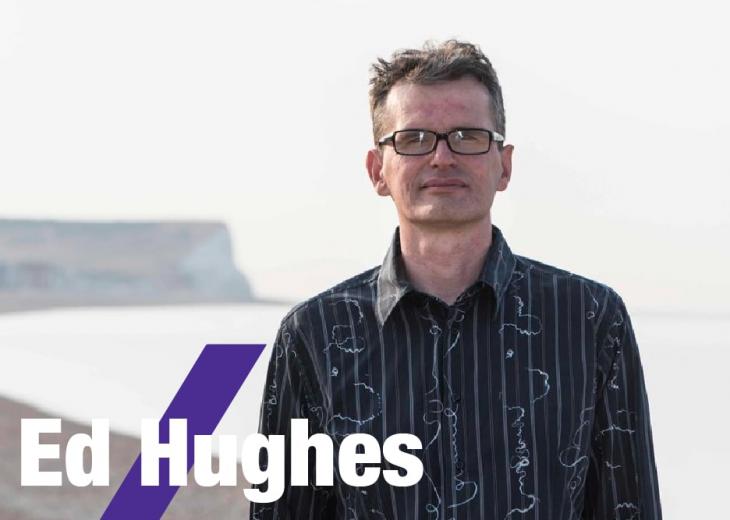
Ed Hughes, b.1968
Light Cut Through Dark Skies
Ed Hughes was inspired to start composing after listening to his school orchestra! He began learning how to write music by listening to other pieces of music and working out how to play them, then using some of those ideas to compose his own works. Ed writes a lot of music for film, and he is particularly interested in composing music for silent films and exploring how music can change and strengthen the atmosphere of what we see on screen.
Light Cut Through Dark Skies was commissioned by the Bath International Film Festival to accompany a silent film which was made in 1929. The piece has a lot of repeating patterns and aims to reflect the intricate visual patterns and small changes in light in the film. You can watch the whole film here (this version has different music on it to that which we will perform).
Activity
Watch (and listen to) this trailer to a film called Koyaanisqatsi (Koi-yan-ee-skat-see) which has music by a famous composed called Philip Glass.
There are three different sections of music heard in the trailer:
-
Beginning to c.1.12: slow, ominous music, built up in layers accompanying images of the natural world which later become images of skyscrapers and city-scapes.
-
c.1.12 – c.1.43: fast, hyper-energetic music that accompanies speeded-up film of modern life (in 1982!)
-
c.1.43 – end: aerial shots of cities mixed with images of micro-chips. Music similar to opening.
Can you describe how the music is different in each section? Think about the dynamics (loud and soft), tempo (speed), texture (number of instruments playing).
Philip Glass doesn’t change his music every time the image on the screen changes but composes music that stretches across all the shots -the music is the thing that binds all the images together in the trailer–natural monuments/skyscrapers and cities/microchips.
Can you collect some photos of your school/environment and make a video-collage out of them? Then, can you create some music that links the images together?
For another activity on composing for film, see below after Upflight of Butterflies.
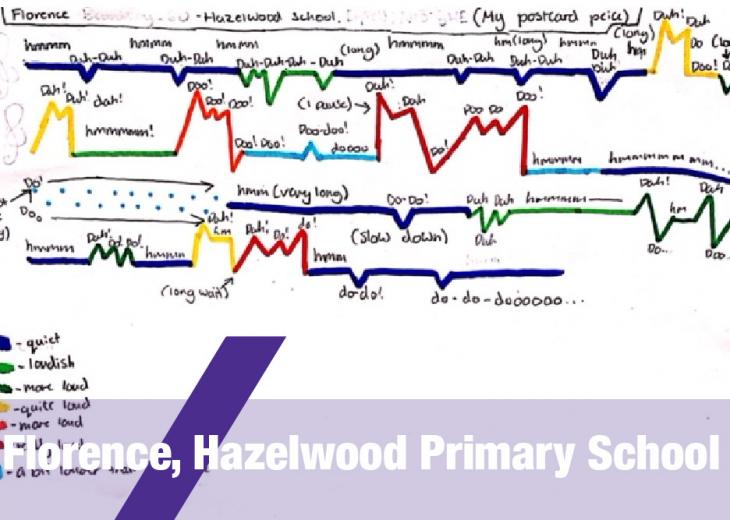
Florence Beardsley, Year 6, Hazelwood Primary School, Enfield
The Waves of London (22 March only) (World Premiere)
We chose to perform this piece because we like the detail in it and the playful use of suggested sounds we might try and make with our instruments. Florence’s piece has a real sense of journey and of place. The colours remind us of London’s underground map, and because 5 musicians will play the piece, we can imagine 5 people going on a journey through London’s tube network.
Southampton Youth Concert Sinfonia
Composition Challenge Piece: Omnis (World Premiere) (23 March only)
This piece was created by 50 young musicians from Southampton Music Hub’s Youth Concert Sinfonia (SYCS) alongside some London Sinfonietta musicians during online ensemble rehearsals in February. The melodies and rhythms of the piece were created using number patterns, inspired by the London Sinfonietta Composition Challenge. The young people gave their piece the title Omnis, meaning ‘all’ or ‘every’ in recognition of the fact that it was created by all of us together and the performance will incorporate London Sinfonietta musicians live on stage with audio recordings from SYCS musicians.
Activity
Have a go creating your own piece of music inspired by numbers and patterns with our Composition Challenge!

Alex Ho, b.1993
iii. Celebrating Together from Say Hi
Alex Ho is a British-Chinese composer based in London. He composes using both Chinese and western instruments and also likes to experiment – he has even composed pieces that include plastic bags and table-tennis players! One of the traditional Chinese instruments Alex writes for is the Yangqin, which you play by hitting the strings with special mallets. His piece Rituals and Resonances (you can listen to it here) uses this instrument specifically because he likes the fact that you cannot always guarantee that it will create the exact same pitch, even if you’re playing the same note.
Say Hi is inspired by the deep sense of community felt in Chinese culture – Alex mentions specifically the importance of food and sharing a meal together, whether it is with your friends or family. Say Hi is written to include the audience as performers so please join in from your classrooms and homes (there is a short film below to help you learn your part)! The piece uses just five notes and is written for a flexible combination of instruments.
Activity
Watch this short film to learn how to sing/hum or sign your part in Say Hi so you can join in with us during the concert!
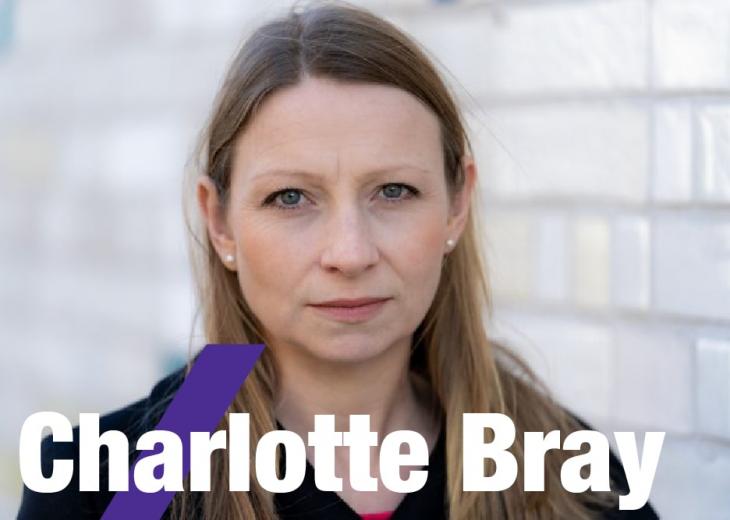
Charlotte Bray, b.1982
Dazzlement of Butterflies from Upflight of Butterflies
Charlotte Bray was born just outside of London in High Wycombe, and went on to study composing at the Birmingham Conservatoire. She has written a wide range of music, from pieces for large orchestras and choirs to smaller ensembles and solo works which have been performed all over Europe, including in Ireland, France and Copenhagen. Charlotte’s musical style is bold, bright and strong so she can create an exhilarating and exciting atmosphere for her audience.
Upflight of Butterflies was inspired by images from nature and natural light, including sunlight burning through dense clouds, piercing glimpses of blinding light catching your eye as you rush through the air. Bray was also inspired by Chilean poet Pablo Neruda and his poem Alliance (Sonata), from a collection of poems entitled ‘Residence on Earth’. The poem describes Neruda feeling isolated and looking for something in the world to connect with. Dazzlement of Butterflies is the last movement (short piece) in the work and is an energetic spiky dance – the piano, clarinet and violin take turns to lead the dance. Bright, musical ‘explosions’ punctuate the dance – like dazzling bursts of light - and become more insistent towards the end.
Activity
Watch this short film from the BBC, looking at the Monarch Butterfly. Watch it with the sound down (there is no narration) so as not to be influenced by the music already on the film.
What happens during the film? Broadly speaking, the film opens with one or two stationery butterflies then moves through one butterfly flying and on to a few then many. Towards the end of the film, they start to land. You can create a timeline of events (don’t just list each shot!) – you might have between 4 and 6 events on your timeline.
See if you can compose a piece, as a class, to play while the film is showing.
How can you compose a piece together that reflects the journey of the film? How should the music start and which instruments do you want to use? Drums might sound too heavy for instance but lighter instruments like a triangle might offer the right feel. How can your music reflect the events on your timeline? Where does the music get louder or quieter, where do more instruments join in or drop out?
The London Sinfonietta
The London Sinfonietta is one of the world’s leading contemporary music ensembles. We perform music by living composers, commission new works and engage people of all ages in creating new music.
The London Sinfonietta musicians performing in the Sound Out Schools Concert are;
Róisín Walters violin
Karen Jones flute
Mark van de Wiel clarinet
Tamaki Sugimoto cello
Yshani Perinpanayagam piano
Patrick Bailey conductor and presenter
Composition Challenges invites young people, teachers and schools to create new music for the London Sinfonietta inspired by the works and musical ideas of living composers. Aimed at KS2/3 and free to take part.
